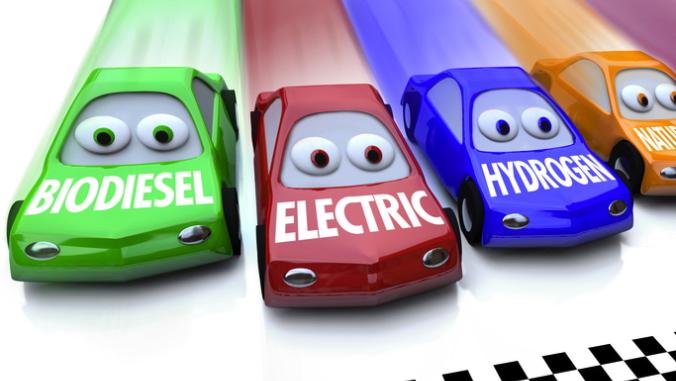Toyota, 3M, Siemens Top List of Best Green Brands
<p>Top scorer Toyota enjoyed positive public perception of its green credentials, largely due to the Prius, but the company has also worked to make its operations more environmentally friendly. Others showed a sometimes galring gap between performance and perception, suggesting that many companies struggle with aligning how they walk the walk with the ways in which they talk the talk.</p>

Despite a sometimes-glaring gap between how companies perform on environmental issues and how the public perceives that performance, some firms succeed on both fronts.
At the top of a list that focuses on both are Toyota, 3M and Siemens. Each of these firms have managed to align how they walk the green walk with how they talk the talk, according to "Best Global Green Brands 2011," the inaugural ranking from consultancy Interbrand.
"We really wanted to make sure they are looking at both sides of the coin," said Emma Hrustic, Interbrand's director of strategy.
Top scorer Toyota enjoys positive public perception of its green credentials, largely due to the Prius, but the company has also worked to make its operations more environmentally friendly. Toyota's gap between perception and perception is -7.64, meaning a lightly lower performance score than perception score.
"Overall, environmental sustainability is deeply ingrained in the brand and has been a core management priority since 1992, when Toyota adopted the 'Toyota Earth Charter,'" the report said. "This focus on green has resulted in solid improvements in energy use, water consumption, waste, and toxic emissions."
To calculate the rankings for "Best Global Green Brands 2011," Interbrand relied on two components. First, the company surveyed more than 10,000 consumers in 10 markets on their understanding of each brand's environmental efforts, including factors such as authenticity, relevance and consistency. Interbrand then analyzed performance based on both publicly available data and data from Thomson Reuter’s ASSET4, a business unit that provides environmental, social and governance information to investors. The areas covered by the performance score include supply chain, stakeholder engagement, governance and logistics.
Here is the list of Top 10 companies:
1. Toyota, 64.19 points
2. 3M, 63.33
3. Siemens, 63.08
4. Johnson & Johnson, 59.41
5. HP, 59.41
6. VW, 58.90
7. Honda, 58.90
8. Dell, 58.81
9. Cisco, 57.66
10. Panasonic, 57.66
Some do more walking than talking, and vice versa. Take L'Oréal, the cosmetics giant that ranked 15th in the ranking, with a 22.68 point gap between performance and perception, a sign that the company isn't actively communicating its efforts to consumers.
Interbrand gave L'Oréal kudos for strong stakeholder engagement, using sustainably sourced wood fiber for packaging and its sustainability reporting. "All of these efforts are not necessarily perceived in the marketplace," Hrustic said.
As a sector, the consumer electronics industry is facing the same dilemma.
"We knew consumer electronics companies are doing well, with a fair amount of work, but that's not the perception that is coming through," Hrustic said.
Conversely, the perception scores of some of the biggest household brands significantly exceeded their performance score, including McDonald's, which placed 45th overall in the ranking. The company received a -27.96 point gap between perception and performance.
"The big gap in perception and performance for brands that are closer to the top of Interbrand’s Best Global Brands list suggests that highly visible top 10 brands like McDonald’s, GE, and Coca-Cola enjoy the positive impact of being a well-known, powerful brand, with green perception matching general perception overall," the report said. "It also suggests that McDonald’s use of the color green has given consumers the perception that it is focusing more on environmental sustainability than reality."
The biggest takeaway, according to Hrustic: "Companies need to align their business strategies with their green strategies, which is why we focus on that gap."





